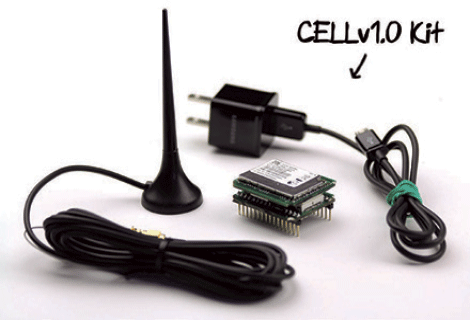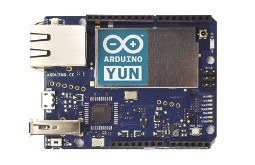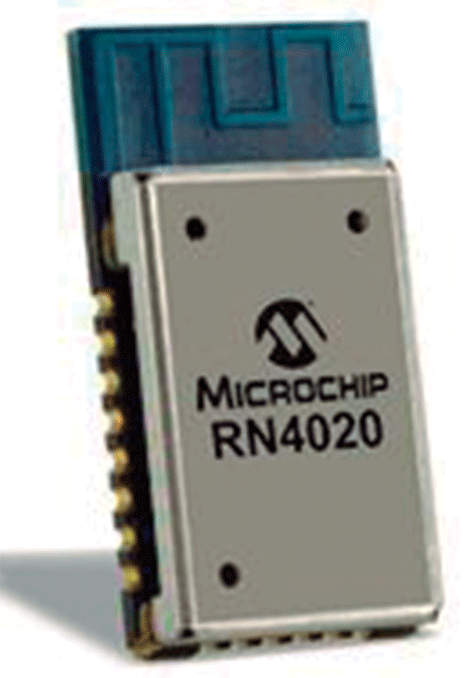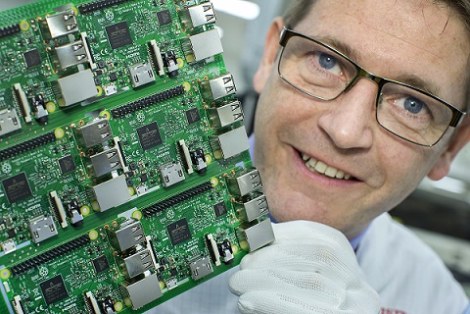SparqEE's new CELLv1.0 solution is a ready platform for integrating global mobile coverage services into a project, and has taken the development community by storm to match the popularity of Bluetooth or WIFI technologies.
Introduction
SparqEE is a California-based company that has developed the concept of a tiny mobile network card that allows developers to integrate global wireless coverage. Its launch took place last August, thanks to the Kickstarter crowd-funding program. CELLv1.0 enables global wireless access to the Internet for projects using the Arduino and Raspberry Pi platforms. Although Bluetooth and WiFi technologies allow high-speed data transfer, technically speaking, they have clear limitations in terms of distance: their coverage is a few meters or a few tens of meters. On the other hand, mobile telephony offers much greater coverage and is indicated for “small data” projects that need coverage in a few streets, a city or even a country.
With a footprint of just 36 x 42 x 7mm, CELLv1.0 is the smallest, cheapest and easiest to use module on the market among common development platforms.
Your device uses 2G/3G technology, so it will mainly connect using global 3G and will only use 2G when 3G connectivity is not available. Obviously, to communicate over a mobile network you need a SIM card and CELLv1.0 supports any SIM, be it a mobile phone or a prepaid SIM. However, SparqEE also offers SIM cards at a reduced price through its website and which offer exceptional performance all over the world.
Applications
The greater coverage of mobile communications allows the development of more applications. Due to bandwidth limitations compared to WIFI or Bluetooth, the appropriate projects for this technology are low-bandwidth data projects based on sensor technology that send small amounts of data over the Internet. Connected to a developer's favorite development board, such as the Raspberry Pi or Arduino, relatively simple projects could be completed, such as a remote assist device to open a door, turn on a light, power an air conditioning unit, or set an alarm on a room. remote office. Another possible project idea could be a vehicle locator, which allows an owner to know where their car is just by consulting a smartphone or computer. A “kill switch” could even be added in the event of vehicle theft. The same basic idea could be applied to a tracking device for dogs or other animals. If we imagine larger or more ambitious applications, we could think of projects to control the flight of a small remote-controlled helicopter powered by solar energy and equipped with a camera for aerial filming over a city; or use remote sensing networks for early warning systems by monitoring bridge harmonics that signal imminent danger, sources of heat in a forest to detect fires or rises in sea levels typical of floods or tsunamis.
mobile networks made easy
The many impediments that discourage developers from implementing mobile network technology have led the company to provide help at every stage of the process so that data can be easily obtained from a device. For example, as the mobile connectivity through the CELLv1.0 is done from the Internet, the data servers will have to be configured. Of course, developers can set up their own servers for CELLv1.0, but with a great business perspective, SparqEE also offers free servers via a standard RESTful implementation, as well as examples to activate it. In this way, users can easily obtain the data from a device, through the cloud, and transfer it to a computer, smartphone or any device with the Internet (figure 1). It is a complete open source project that integrates code, schematics, PCB files, with EAGLE and DesignSpark PCB formats, design files, examples, images, and other useful components. The CELLv1.0 package is supplied with the board, antenna and power cable. SparqEE has also opened a forum on its website, www.sparqee.com, dedicated to developer projects. Originally, when it launched via Kickstarter, CELLv1.0 was a two-piece design: a cellular board and a breakout/bypass board. However, the new design is a single board, as shown in Figure 2, which has been simplified with a single USB power cable and the appropriate Arduino or Raspberry Pi platform. To arrive at the single board design, only four connection cables were needed: TX, RX, ground (GND) and voltage reference (Vref), with the possibility of using any 3,3 or 5 V system.
CELLv1.0 Specifications
CELLv1.0 Mobile Network Module electrical specifications include: 3,7 to 5V input voltage, powered by USB cable or PCB contacts; current draw less than 5mA quiescent, less than 75mA (medium, no services), less than 500mA (medium) and 2,3A maximum.
The connectivity specifications are: WCDMA/HSDPA 2100/1900/900MHz, for 384 Kbps or DL 3,6 Mbps HSDPA; GSM/GPRS/ EDGE 850/900/1800/1900MHz; serial interface (UART, any voltage like 3,3V or 5V) and USB 2.0 interface (power, USART and modem). And finally, Windows, Linux and Android drivers are available.
The SparqEE is now available exclusively from RS Components.







